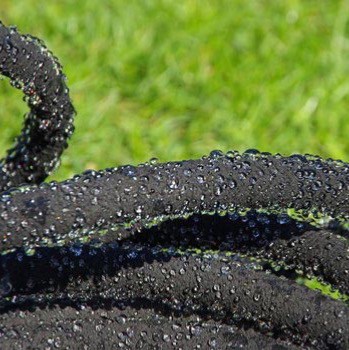
Keeping Plants Healthy in the Heat of the Summer
The heat is on! With the hot, dry spell that we have been having lately, the landscape plants start to suffer. While established trees, shrubs, and perennials don’t usually need much attention during a heat wave, even some of those plants are showing signs of stress. Plants are drooping and the leaves are looking brown and crispy.
The best method of watering both new and established plants is to water slowly and deeply. A soaker hose applies water directly to the rootball without losing water to evaporation and runoff. Most water evaporates before reaching the ground when using overhead sprinklers. Pay special attention to newly-planted landscapes, plants without established roots dry out more quickly. Watering deeply encourages roots to grow deeper into the soil, where it stays moister longer. The best time to water is in the evening or early morning to give the plants time to absorb the moisture. Do not fertilize when the plants are dry or stressed, this increases the chance of fertilizer burn. Two to three inches of mulch will greatly help retain moisture, regulate soil temperature, and suppress weeds that compete for the water. Deadheading plants will also help plants so energy and water aren’t wasted in seed production.
The heat is on! With the hot, dry spell that we have been having lately, the landscape plants start to suffer. While established trees, shrubs, and perennials don’t usually need much attention during a heat wave, even some of those plants are showing signs of stress. Plants are drooping and the leaves are looking brown and crispy.
The best method of watering both new and established plants is to water slowly and deeply. A soaker hose applies water directly to the rootball without losing water to evaporation and runoff. Most water evaporates before reaching the ground when using overhead sprinklers. Pay special attention to newly-planted landscapes, plants without established roots dry out more quickly. Watering deeply encourages roots to grow deeper into the soil, where it stays moister longer. The best time to water is in the evening or early morning to give the plants time to absorb the moisture. Do not fertilize when the plants are dry or stressed, this increases the chance of fertilizer burn. Two to three inches of mulch will greatly help retain moisture, regulate soil temperature, and suppress weeds that compete for the water. Deadheading plants will also help plants so energy and water aren’t wasted in seed production.
